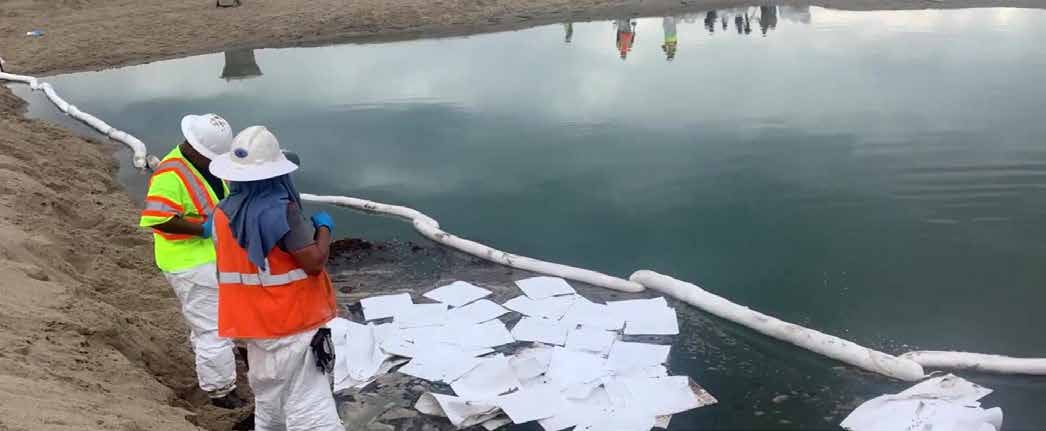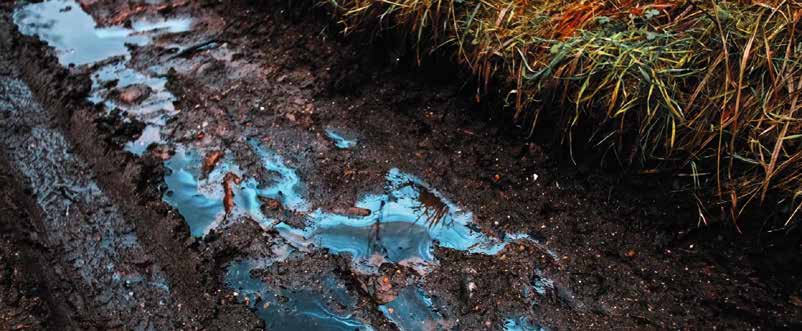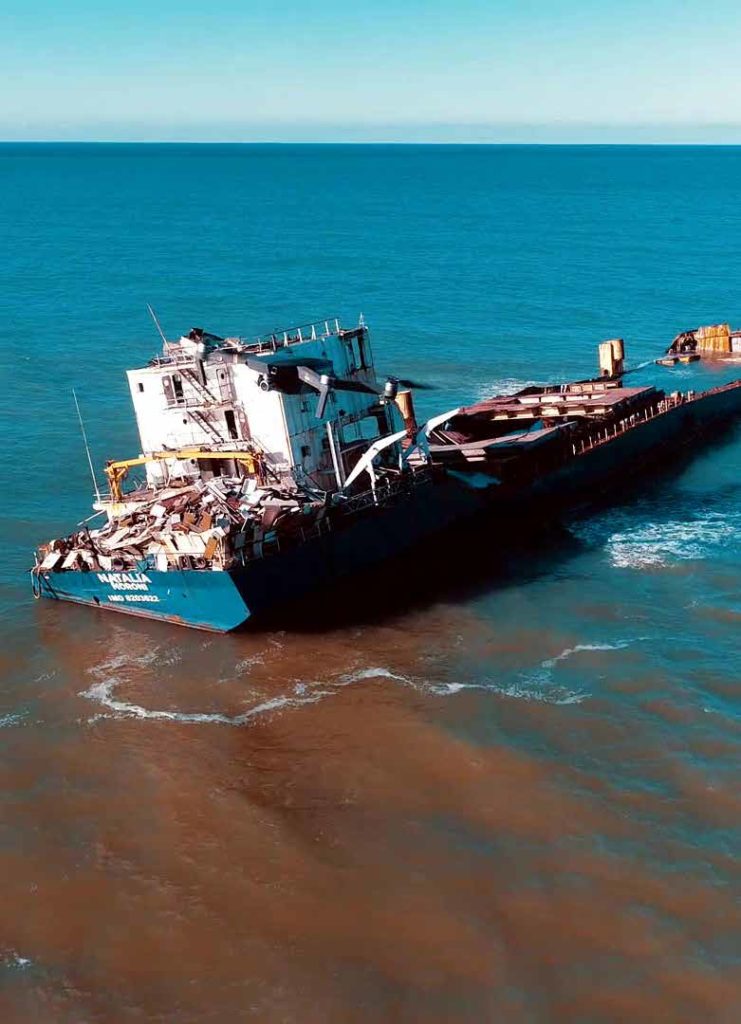
Microbe Sciences River and Lake remediation
The health of aquatic ecosystems is critical to maintaining biodiversity, supporting human livelihoods, and ensuring the availability of clean water resources. However, lakes and rivers worldwide are increasingly threatened by pollution resulting from industrial, agricultural, and urban activities. Nutrient loading, organic matter deposition, heavy metal contamination, and the introduction of harmful pathogens have led to the degradation of these water bodies, manifesting in issues such as eutrophication, loss of biodiversity, and contamination of drinking water sources.
The conventional approaches to restoring polluted water bodies often involve physical removal of contaminants, chemical treatments, and mechanical aeration. While these methods can be effective to some extent, they are often expensive, temporary, and can result in secondary pollution. In contrast, bioremediation, the use of living organisms to degrade, transform, or detoxify contaminants in the environment, offers a more sustainable and environmentally friendly solution.
Microbebio, a pioneer in microbial biotechnology, has developed proprietary microbial formulations designed specifically for the bioremediation of polluted aquatic ecosystems. These formulations harness the natural capabilities of selected microbial consortia to restore the ecological balance in lakes and rivers. This article provides an in-depth exploration of how Microbebio’s proprietary microbial technologies function, the science behind their effectiveness, and the potential impact they can have on restoring aquatic ecosystems.
The Science Behind Microbebio’s Microbial Formulations
Microbes, particularly bacteria, fungi, and algae, play a crucial role in natural biogeochemical cycles. They are involved in processes such as the decomposition of organic matter, nitrogen fixation, phosphorus solubilization, and the degradation of pollutants. Microbebio’s proprietary microbial formulations are carefully designed to enhance these natural processes in polluted water bodies. The formulation includes a consortium of bacteria, fungi, and algae selected based on their metabolic capabilities, resilience to environmental stressors, and synergistic interactions.

Bacterial Consortia
Bacteria are the workhorses of bioremediation, capable of degrading a wide range of organic and inorganic pollutants. Microbebio’s formulations include bacterial strains with specific abilities to degrade hydrocarbons, pesticides, heavy metals, and other toxic compounds commonly found in polluted water bodies. For example, certain strains of *Pseudomonas* and *Bacillus* are known for their ability to degrade hydrocarbons, while *Desulfovibrio* species are effective in reducing sulfate and mitigating acid mine drainage.
These bacteria function through various metabolic pathways, such as aerobic and anaerobic respiration, fermentation, and co-metabolism. In aerobic conditions, bacteria utilize oxygen as the terminal electron acceptor to break down organic pollutants into carbon dioxide, water, and biomass. Under anaerobic conditions, bacteria can use alternative electron acceptors such as nitrate, sulfate, or even metals, enabling them to degrade pollutants in oxygen-depleted environments often found in polluted lakes and rivers.
Fungal Components
Fungi contribute to bioremediation through their ability to degrade complex organic compounds, such as lignin, cellulose, and other recalcitrant materials that bacteria alone cannot easily break down. Microbebio’s formulations include white-rot fungi like *Phanerochaete chrysosporium*, known for its ligninolytic enzymes, which can break down a variety of pollutants, including synthetic dyes, polycyclic aromatic hydrocarbons (PAHs), and pesticides. These fungi produce extracellular enzymes, such as laccases, peroxidases, and cellulases, which initiate the breakdown of large, complex molecules into smaller, more biodegradable compounds.
Fungi also play a significant role in heavy metal remediation through biosorption, a process where fungal biomass adsorbs and concentrates heavy metals from the water. The combination of bacterial and fungal activity in Microbebio’s formulations ensures a comprehensive approach to pollutant degradation, tackling both easily degradable and more persistent contaminants.
Algal Contributions
Algae, particularly microalgae, are included in Microbebio’s formulations to enhance the removal of nutrients such as nitrogen and phosphorus from polluted water bodies. Excessive nutrient loading, often from agricultural runoff and wastewater discharge, leads to eutrophication, characterized by algal blooms, oxygen depletion, and the subsequent death of aquatic life. Microalgae can assimilate these nutrients, incorporating them into their biomass and thus reducing the nutrient levels in the water.
Additionally, certain microalgae are capable of degrading organic pollutants through the production of extracellular enzymes and by facilitating the growth of pollutant-degrading bacteria in their vicinity. The presence of algae also contributes to oxygen production through photosynthesis, which can counteract hypoxic conditions in polluted waters.
Mechanisms of Action in Aquatic Ecosystems
The effectiveness of Microbebio’s microbial formulations in cleaning up lakes and rivers is rooted in several interconnected mechanisms, including pollutant degradation, nutrient cycling, bioaugmentation, and ecological restoration.
Pollutant Degradation
The primary mechanism by which Microbebio’s microbes clean up water bodies is through the degradation of pollutants. The microbial consortia in the formulations target specific pollutants based on their metabolic capabilities. Hydrocarbons, for instance, are broken down by bacteria through a series of oxidation-reduction reactions that convert them into less harmful substances such as carbon dioxide and water. Similarly, organic pollutants like pesticides and dyes are degraded by both bacterial and fungal enzymes, transforming them into less toxic intermediates or completely mineralizing them.
Heavy metals, which are not biodegradable, are addressed through microbial processes such as biosorption, bioaccumulation, and biotransformation. Certain bacteria and fungi can sequester heavy metals by binding them to their cell walls or transforming them into less toxic forms, thereby reducing their bioavailability and toxicity in the aquatic environment.
Nutrient Cycling and Eutrophication Control
Eutrophication is a significant challenge in polluted water bodies, leading to algal blooms, hypoxia, and the collapse of aquatic ecosystems. Microbebio’s formulations include microbial species that enhance nutrient cycling, particularly nitrogen and phosphorus. By converting these nutrients into biomass or through processes such as denitrification, where nitrate is converted to nitrogen gas, these microbes effectively reduce the nutrient levels in the water, preventing eutrophication.
The inclusion of microalgae in the formulations further aids in nutrient removal while also contributing to oxygenation of the water through photosynthesis. This dual action not only mitigates eutrophication but also restores the oxygen balance in the water, supporting the recovery of aquatic life.
Bioaugmentation
Bioaugmentation, the introduction of selected microorganisms into an environment to accelerate the degradation of contaminants, is a core component of Microbebio’s approach. The proprietary microbial formulations are designed to enhance the natural microbial communities in the water, providing them with additional metabolic capabilities to degrade pollutants more efficiently. By introducing microbes that are well-adapted to the specific pollutants present in the water, Microbebio’s formulations ensure rapid and effective bioremediation.
The success of bioaugmentation depends on the ability of the introduced microbes to survive, colonize, and remain active in the aquatic environment. Microbebio’s formulations include robust strains that can withstand various environmental stressors, such as changes in temperature, pH, and salinity, ensuring their effectiveness across a wide range of aquatic ecosystems.
Ecological Restoration
Beyond pollutant degradation and nutrient removal, Microbebio’s microbial formulations contribute to the broader ecological restoration of polluted water bodies. By breaking down pollutants and reducing nutrient levels, these microbes help restore the natural balance of the ecosystem, allowing native species of plants, fish, and other aquatic organisms to recover. This restoration of biodiversity is crucial for the long-term health and resilience of lakes and rivers.
Moreover, the microbial activity in the sediments of lakes and rivers plays a critical role in sediment bioremediation. Pollutants often accumulate in sediments, creating long-term environmental hazards. Microbebio’s formulations include microbes capable of degrading contaminants in both the water column and sediments, ensuring a comprehensive cleanup of the entire aquatic ecosystem.
 Case Studies and Field Applications
Case Studies and Field Applications
The practical application of Microbebio’s microbial formulations has demonstrated their effectiveness in various polluted water bodies around the world. Case studies highlight the versatility and adaptability of these formulations in addressing a wide range of pollution challenges.
Lake Restoration in Southeast Asia
In a highly industrialized region of Southeast Asia, a large lake was suffering from severe eutrophication and contamination from industrial effluents, including heavy metals and organic pollutants. The local government sought a sustainable solution that would not only clean the lake but also restore its ecological health. Microbebio’s proprietary microbial formulations were introduced into the lake over several months.
The results were significant: nutrient levels in the water were reduced by over 60%, leading to a noticeable decrease in algal blooms. The microbial activity also resulted in the degradation of industrial pollutants, reducing their concentrations to safe levels. Moreover, the oxygen levels in the lake improved, supporting the recovery of fish populations and aquatic plants. The lake, once considered a dead zone, was revitalized into a thriving ecosystem.
River Cleanup in North America
A river in North America, heavily polluted by agricultural runoff containing pesticides, fertilizers, and organic waste, was targeted for bioremediation using Microbebio’s microbial formulations. The river had suffered from fish kills, reduced biodiversity, and poor water quality due to high levels of pollutants and low oxygen levels.
The application of Microbebio’s formulations led to a rapid improvement in water quality. Pesticide concentrations were reduced by over 70%, and nutrient levels dropped significantly, preventing further eutrophication. The oxygen levels in the river increased, resulting in the return of fish and other aquatic life. The microbial consortia continued to thrive in the river, providing ongoing bioremediation and contributing to the long-term health of the ecosystem.
Sediment Remediation in a European Lake
In Europe, a lake suffering from decades of pollution had accumulated a thick layer of contaminated sediments, posing a significant environmental hazard. Microbebio’s formulations were applied to the sediments to accelerate the degradation of organic pollutants and reduce the bioavailability of heavy metals.
Over the course of several
months, the microbial activity in the sediments led to the breakdown of organic pollutants, reducing their concentrations by over 80%. Heavy metals were transformed into less toxic forms, decreasing their environmental impact. The sediment bioremediation not only improved the quality of the lake’s sediments but also contributed to the overall recovery of the lake’s water quality and biodiversity.
Advantages and Challenges of Microbial Bioremediation
While microbial bioremediation offers significant advantages, including sustainability, cost-effectiveness, and environmental friendliness, it is not without challenges. Understanding these factors is crucial for the successful application of Microbebio’s microbial formulations in aquatic ecosystems.
Advantages
- Sustainability: Microbial bioremediation is a natural process that does not rely on harmful chemicals or energy-intensive methods, making it a sustainable approach to cleaning up water bodies.
- Cost-Effectiveness: Compared to traditional methods such as dredging or chemical treatments, microbial bioremediation is relatively low-cost, especially for large-scale applications.
- Long-Term Impact: By restoring the natural microbial communities and ecological balance in lakes and rivers, microbial bioremediation provides long-term benefits that extend beyond the immediate cleanup.
- Environmental Compatibility: Microbes used in bioremediation are typically native or non-invasive species, minimizing the risk of ecological disruption.
Challenges
- Environmental Variability: The effectiveness of microbial bioremediation can be influenced by environmental factors such as temperature, pH, and salinity. Ensuring that the introduced microbes can thrive in the specific conditions of the water body is critical.
- Time Frame: Microbial bioremediation may take longer to achieve results compared to more aggressive methods. Patience and careful monitoring are required to assess progress and make necessary adjustments.
- Regulatory Considerations: The introduction of microbial consortia into natural water bodies may be subject to regulatory oversight. It is important to comply with local regulations and obtain necessary approvals before application.
- Potential for Resistance: Just as in medical contexts, there is a potential for pollutants to develop resistance to microbial degradation. Continuous monitoring and adjustments to the microbial formulations may be required to address this issue.
Microbebio’s proprietary microbial formulations represent a cutting-edge solution to the growing problem of water pollution in lakes and rivers. By leveraging the natural capabilities of selected microbial consortia, these formulations offer a sustainable, effective, and environmentally friendly approach to bioremediation. Through the degradation of pollutants, nutrient cycling, bioaugmentation, and ecological restoration, Microbebio’s microbial technologies can transform polluted water bodies into healthy, thriving ecosystems.
As the world continues to grapple with the challenges of water pollution, the adoption of innovative bioremediation strategies like those offered by Microbebio will be critical to preserving our aquatic resources for future generations. The success stories from various regions demonstrate the potential of these microbial formulations to address a wide range of pollution issues, providing a model for sustainable water management globally.